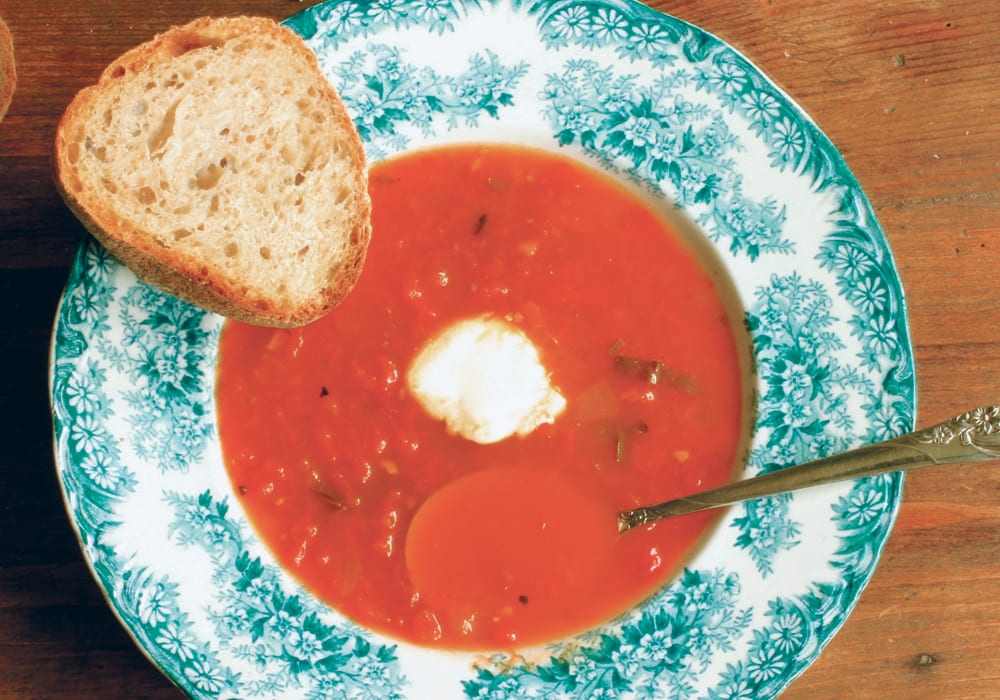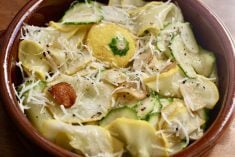Canned tomato sauce is like summer in a jar that will keep throughout winter. Canning may not be as popular as it used to be but it remains the best way to preserve tomatoes.
Roma tomatoes are the best for making sauce because they are meatier and have fewer seeds but any tomato can be used.
Store tomatoes at cool room temperature until ripe. Then wash and peel them. Cutting a small X on the bottom before blanching makes the peel much easier to remove. Drop the tomatoes into boiling water for up to a minute then plunge them into ice water. Slip off the skins.
Read Also

Know what costs are involved in keeping crops in the bin
When you’re looking at full bins and rising calf prices, the human reflex is to hold on and hope for more. That’s not a plan. It’s a bet. Storage has a price tag.
Tomatoes have a pH of about 4.6, which is the cut-off point between high and low acid foods. Acidity levels will vary due to variety and growing conditions.
For this reason, it is recommended to add acid to each jar. Citric acid or lemon juice is suggested. Cook tomatoes in a stainless steel pot rather than aluminum, copper or iron. The acid will react with these metals and create unpleasant flavours and colours.
Also avoid using wooden utensils because they absorb flavours that can be passed on to the tomato sauce.
Tomato sauce is versatile and can be used when making soups, cabbage rolls, pasta and pizza sauces and curries.
Canned Tomato Sauce
- tomatoes
- bottled lemon juice or citric acid
- salt or to taste
- dried herbs such as basil or oregano, optional
Quarter tomatoes and pass them through a food mill to separate the skins and seeds from the juice and pulp. Heat juice and pulp and bring to a boil.
Ladle sauce into each jar to within 1/2 inch of the top rim to create head space. Using a nonmetal utensil, such as a plastic knife, remove air bubbles. Wipe jar rim removing any stickiness. Place a metal snap lid on the jar and apply the screw band securely and firmly, until resistance is met. This is finger tight. Do not over tighten. Place jar in canner and repeat until canner is full.
Cover canner and return the water to a boil. At altitudes up to 1,000 feet (305 metres) process jars for 35 minutes.
Remove jars without tilting. Cool upright, undisturbed, for 24 hours. Do not retighten screw bands. After they are cooled check jar seals. Label jars with the name of the food item and date prepared and store in a cool dark place.
Additions to Basic Tomato Sauce
For an Italian marinara sauce, add chopped parsley and basil. Adding bell peppers, pumpkin seeds and cumin can make a Mexican style tomato sauce.
Cajun flavour can be acquired by adding bell pepper, celery and onion.
Garlic and herbs of your choice can also be added to create your own signature tomato sauce.
Red Enchilada Sauce
- 1 tbsp. olive oil 15 mL
- 2 cloves garlic, minced
- 2 tsp. minced onion 10 mL
- 1/2 tsp. dried oregano 2 mL
- 2 1/2 tsp. chili powder 12 mL
- 1/2 tsp. dried basil 2 mL
- 1/8 tsp. ground black pepper .5 mL
- 1/8 tsp. salt .5 mL
- 1/4 tsp. ground cumin 1 mL
- 1 tsp. dried parsley 5 mL
- 1 c. tomato sauce 250 mL
- 1 1/2 c. water 375 mL
Heat the oil in a large saucepan over medium heat. Add garlic and saute for one to two minutes. Add onion, oregano, chili powder, basil, ground black pepper, salt, cumin, parsley and tomato sauce.
Mix together and then stir in the water. Bring to a boil, reduce heat to low and simmer for 15 to 20 minutes.
Cool slightly, then puree in a blender.
Serve with enchiladas, tacos, a Mexican lasagna or on eggs for huevos rancheros.
Chicken Curry
- 2 – 2 1/2 lb. skinless, boneless chicken 1000-1250 g
- 3 tsp. salt 45 mL
- 1/2 c. vegetable oil 125 mL
- 1 1/2 c. finely chopped onion 375 mL
- 1 tbsp. finely chopped garlic 15 mL
- 1 1/2 tsp. finely chopped ginger root 7 mL
- 1 tsp. cumin 5 mL
- 1 tsp. turmeric 5 mL
- 1 tsp. ground coriander 5 mL
- 1 tsp. ground hot red pepper 5 mL
- 1/4 tsp. ground fennel seed 1 mL
- 1/2 c. water 125 mL
- 1 c. tomato sauce 250 mL
- 2 tbsp. finely chopped cilantro 30 mL
- 1/2 c. plain yogurt 125 mL
- 1 tbsp. fresh lemon juice 15 mL
Pat the chicken pieces dry with a paper towel and sprinkle with two teaspoons (10 mL) salt.
In a heavy 10- to 12-inch (25-30 cm) skillet heat the oil over high heat. When oil is very hot, add the chicken and fry for 3 or 4 minutes, turning the pieces until they are white and somewhat firm. Transfer the chicken to a plate.
Add onions, garlic and ginger to skillet and stirring constantly, fry for seven or eight minutes, or until the onions are soft and golden brown.
Reduce heat to low, add cumin, turmeric, ground coriander, red pepper, fennel and one tablespoon (15 mL) of the water.
Fry for a minute or so while stirring. Stir in tomato sauce, one tablespoon (15 mL) of the fresh cilantro, the yogurt and remaining one teaspoon (5 mL) of salt.
Increase heat to moderate and add chicken and any juices that accumulated on the plate. Pour in the remaining water. Bring to a boil while turning the chicken pieces over to coat in the sauce. Reduce heat to a simmer, cover tightly and cook until chicken is fully cooked, about 30 minutes. Sprinkle with lemon juice and one tablespoon (15 mL) chopped cilantro just before serving. Adapted from Time Life cookbook
Sarah Galvin is a home economist, teacher and farmers’ market vendor at Swift Current, Sask., and a member of Team Resources. She writes a blog at allourfingersinthepie.blogspot.ca. Contact: team@producer.com.















